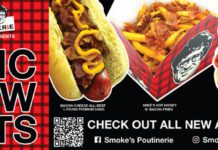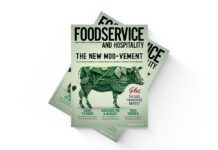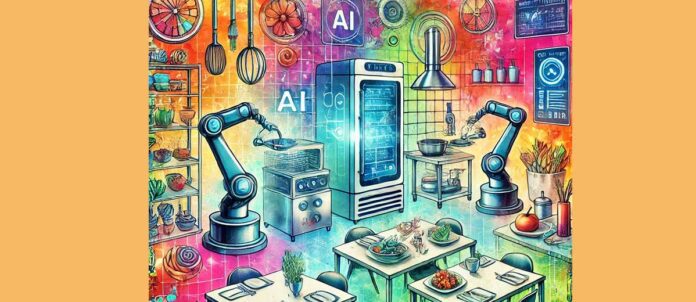By Denise Deveau
Today’s foodservice operators are serving multiple masters at the same — whether the demand is to reduce overhead, meet sustainability goals, speed up service, reduce waste, or do more with less space, time, and labour.
“Operators are looking for any way they can lower input prices,” says John Lilly, senior product analyst, True Refrigeration Canada, St. Louis, Mo.
The good news is, advanced technologies that once were luxuries only larger-scale operations could afford, are becoming accessible to all. There are far fewer barriers to entry for innovations such as multi-function appliances, ventless ovens, blast chillers, automated prep tools, or fully integrated POS systems.
We talked to suppliers and operators to get their thoughts on the trends that are dominating equipment choices today. Following is a sampling of some of the many solutions that are gaining traction with today’s operators.
Smart appliances
“Smart kitchens are an emerging trend,” says Granett Douglas, vice-president, Foodservice Division for GBS Foodservice Equipment Inc. in Oakville, Ont.
Smart appliances allow operators to reproduce the same recipe over and over without having to rely on the expertise of the person using it. “We’re seeing it in items like mixing kettles, skillets, and combi ovens,” says Chris Jeens, president, WD College in Mississauga, Ont.
Programmability is becoming a must-have feature as operations can no longer afford to make mistakes, says Steve Meehan, corporate chef, Food Service Solutions Canada, Oakville. “Every mistake is like throwing money in the garbage.”
Remote connectivity options abound. Alto-Shaam’s Vector and Converge structured air technologies for example, feature ChefLinc remote oven management. With it, operators can program different temperature, timing, and fan speeds for multiple zones within the oven chambers.
True Ice Machines’ TrueConnect technology allows remote access to vital information on water temperatures, when it needs servicing, ice levels, and usage.
Automated prep tools
“Restaurants might not be too keen to spend hours training someone that might leave in five or six months. If there’s a machine that can do cutting and chopping, maybe you can take out that added labour,” says Jim Hayes, Sales director and corporate chef, Sutton Food Solutions.
Automation can be as simple as a machine that assembles burgers or automates breading and frying. “Antunes does a ton of this type of ,” says Meehan. Solutions can range from touchless sauce dispensers and pizza topping systems to automated bun feeders and conveyors.
Ventless systems
“Ventless continues to be big,” says Douglas. “Every major combi manufacturer has a solution.”
Not only do they reduce the cost of ventilation hoods they allow operators to move equipment around a kitchen, to the front of house, or between locations. “What’s great about ventless is that you can operate a complete kitchen in a very small footprint,” says Joe Levesque, corporate chef, Alto-Shaam in Concord.
“There are a lot of options for ovens, fryers, and griddles that are fully ventless,” notes Jeens. “Whenever anyone visits us, it’s almost inevitable something we talk about has to do with ventless.”
Multifunctional appliances
“Multi-functional appliances allow you to save space, drive consistency, and be more efficient,” says Douglas. “For example, you can use one combi instead of having a convection oven, steamer, grill, and fryer.”
Newer iterations, such as the Lainox NEO combined blast chiller/holding cabinet/cooking tool, or Rational iVario Pro modern cooking system that boils, pan fries, deep-fries and pressure cooks, can replace a multitude of conventional appliances in a small footprint environment.
Induction
“Operators are moving towards electrification to allow kitchens to be more efficient and lower their carbon footprint,” says Douglas. “Induction is growing faster because of its efficiency over traditional gas and electric.”
Induction is the future for more and more projects, confirms Martin Tancrel, executive chef consultant, Food Service Solutions Canada in Montreal. “It has become popular for drop-in and wok units. A lot of buffets are going for induction.”
Spot refrigeration
As operators are moving to keeping lower volumes of food on site, they are turning to smaller refrigeration solutions on the cookline or other places refrigeration is required, says Lilly.
“If you look at some kitchens, they may have five fridges in a small space all purposed to different types of proteins and vegetables and placed exactly where they need to be.”
“When you buy those ingredients, you want to maximize your return. You need the right equipment to do that,” says Jeens.
Food waste and sanitation
When it comes to food safety and food waste, technologies are taking much of the guesswork (and labour) out of the equation.
Blast chillers from Afinox, for example, offer built in cloud-based HACCP capabilities that enable operators to adhere to
standards for chilling and handling, says Douglas.
“The dishwashing area is one of the most critical parts of the kitchen when it comes to sustainability and the environment,” says Gary Lee, director of Sales, MEIKO. “There’s a move from low temperature to high temperature warewashing systems to get the levels of sanitizing required without using chemicals.”
Biodigesters are also becoming a staple in larger volume settings. Units such as MEIKO’s BioMaster, Syker, and Power Knot are designed to break down organics to a slurry that can then be reused for renewable energy, eliminating the need to send it to landfill or wastewater systems.
POS integration
Moving to the front of house and beyond, POS integration is expanding its reach.
“You can now have a whole tech stack that your POS system can plug into for a seamless experience,” Hillary Hadley, senior strategist with Paytronix Systems, Boston, MA, a digital guest-engagement platform.
Digital capabilities make it much easier for small brands to compete, says Hadley. “In the last two years smaller restaurants are getting into digital and mobile app loyalty. They can lean into creating experiences based on the data they get through loyalty and first party ordering programs.”
Locker systems
One trend that took hold through COVID and is gaining popularity in the QSR space especially is contactless refrigerated and heated locker systems for takeout and pickup. “Typically, they are being used as part of a diversified takeout/pick-up model,” says Todd Griffith, vice-president Sales, RPI Industries, Inc. in Medford, N.J. The ONDO Locker System for example, integrates with POS systems offer a seamless and automated takeout/pickup experience from the time the mobile order is placed to pickup.
The basic need
Even though the wealth of choices seems complex on the surface, there is a fundamental need that drives all decisions, says Levesque. “It boils down to being able to execute great meals with low skilled labour. Every day, every week, we are having that same conversation with operators.”


















